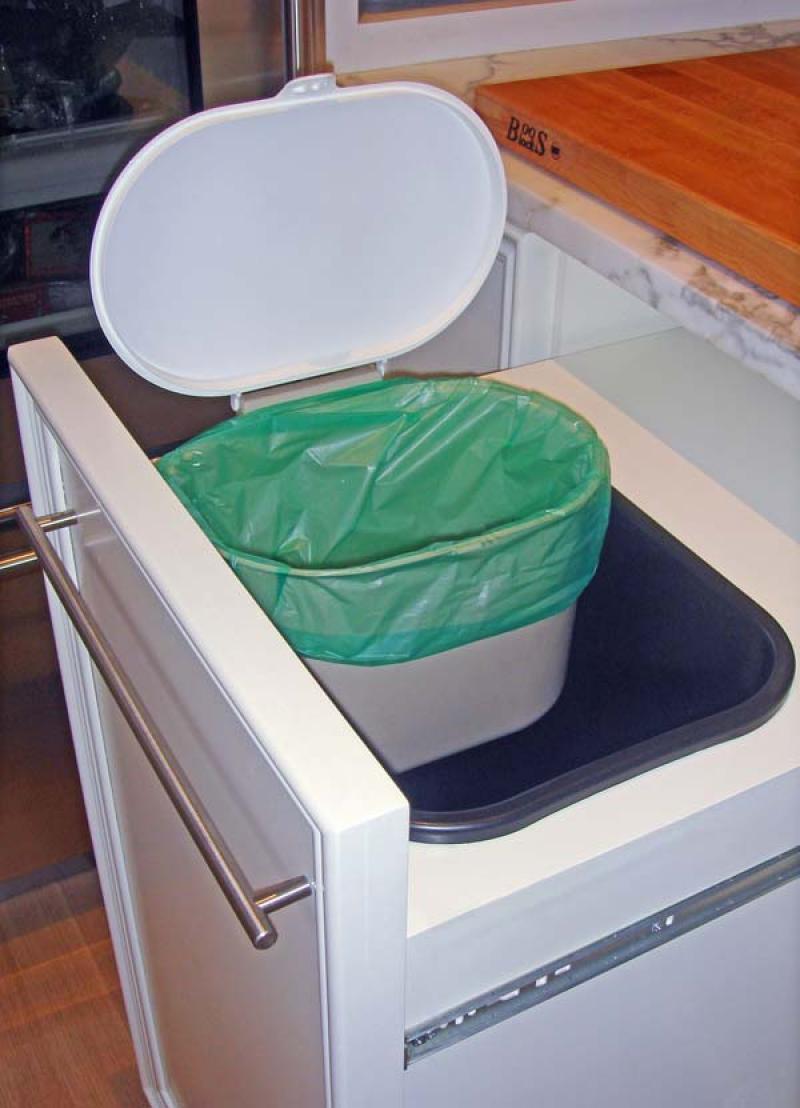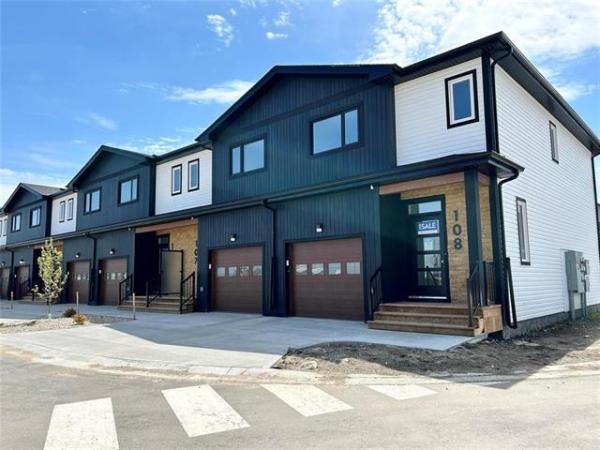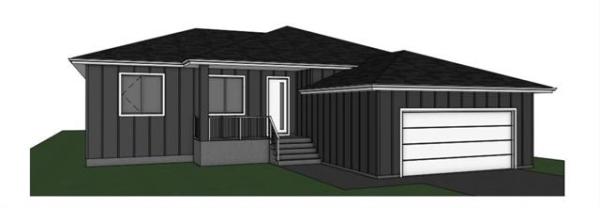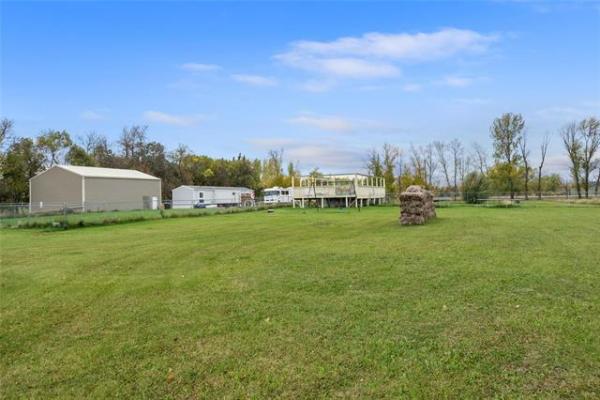
"Houses ... are not built to be green," says Sarah Franklin, co-owner of Somebody Else's Time, a Calgary home-organizing business. "Most of the houses that were built in the last five to 10 years do not have a designated area for recycling."
Franklin says most new homes feature an open-concept design, a great room and a small kitchen area tucked into a back corner. In other words, no obvious place to put all those empty plastic milk jugs.
When Franklin organizes a home, she does so with a mind toward better environmental practices.
Step one? Creating a designated recycling area in both the kitchen and garage.
"You tend to find that in houses with a walk-through pantry, there's more potential for it," Franklin says. "You can split it into food storage and recycling."
She recommends adding one more shelf near the ceiling to store small appliances and other items most people keep on the pantry floor. Then use that floor space for recycling bins.
"We use the small office recycling boxes designed for paper; they'll also fit on pantry shelves," Franklin says. "Fit in as many as you can, so you can separate (recyclables) at the time."
That last step is almost as important as making space, Franklin says, when it comes to motivating yourself to follow through on recycling.
"Who wants to spend an hour and a half on Saturday, sorting through a big pile of stuff before you can take it to the recycling?" she says. "It's much more motivating to have it sorted."
The final step? A curbside recycling service.
Of course, there are other things you can do around the house to green things up. Change your lightbulbs, install a controllable thermostat, hang energy-efficient window coverings (you can now buy drapes with an insulating lining at the back.) Stop spot-lighting every shrub in your yard all night long. You know, the obvious stuff.
As for the non-obvious stuff, Franklin suggests going room by room.
"Look at how you use the space," she says. "If there's a side table where you tend to throw the newspaper, and it ends up in the garbage, then put a basket there to collect it."
Organize the kids' playroom. Teach them that when they've finished creating their masterpieces, they don't need to throw away all the used paper and scraps. They can have their own mini-recycling system right there.
Then there's the laundry room. Most of us don't have our laundry "under control," Franklin says, and that leads to half-loads going in at the last minute.
"People go, 'Oh, I need to wear those jeans tomorrow,' so they grab a couple of other dark things," she says. "But it's not a full load."
The problem stems from home design again.
"Most people have their mudroom and laundry in the same room," Franklin says.
"That makes it really difficult."
She suggests installing a work surface -- ideally over top of a front-loading washer and dryer. Having that space for baskets, sorting and ironing can make a world of difference, and keep the chaos from expanding into the rest of the house. Wire shelving with a hanging rail can help, too, and cut down on dryer use.
"Once that's in place, you'll find your bedrooms don't suffer as much," she says.
Franklin also finds a huge amount of waste happens in the home office.
"Old habits die hard, and filing appears to be a universally hated task," she says. "In the current age of computer everything, we simply have no need for monthly statements. We can view, download and store our statements and bills online, and if we really want a paper copy, print them ourselves."
Not only does this reduce environmental impact, it keeps your office organized.
Bathrooms aren't exempt from Franklin's organizing, either. Just a bit of co-ordinating under the sink can lead to better recycling practices, she says. If you give yourself a place to collect toilet paper rolls, empty shampoo bottles and soap boxes, you'll automatically put them there instead of the garbage.
While we're under the sink, let's talk about cleaning products. A bit of organizing can create a lot of new space.
"Most people have 55 cleaning products, most of them half full," Franklin says.
"If you buy microfibre cloths, they don't even need cleaning products." There are double benefits to that -- fewer toxins in your house and more space to collect recyclables. You can also buy environmentally friendly cleaning products which have reusable bottles.
These are small changes, but if you want to make major improvements, look at the basement and the garage. Having them organized can make a world of difference to the way your entire house runs, Franklin says.
"For many people, the disorganization comes about because of the need to buy, purchase and replace," she says. "By organizing what we have, we can see that we have at least five sets of Disney napkins which are cluttering space and can be reused."
Franklin recommends putting up some inexpensive shelving, and then using plastic tubs to organize the storage area. Label them.
"It's improving the efficiency of the whole house, if you can find things more easily."
The garage can also be a big job, especially if you are in a new home. The first thing Franklin recommends is insulating and drywalling. That saves energy in the home and reduces the need to warm up your car in winter. And it makes it easier to install shelves -- for that dedicated recycling area in the garage.
"People use their houses more efficiently when they're organized," Franklin says. "And an important byproduct of a well-organized home is your impact on the environment."
-- Canwest News Service



